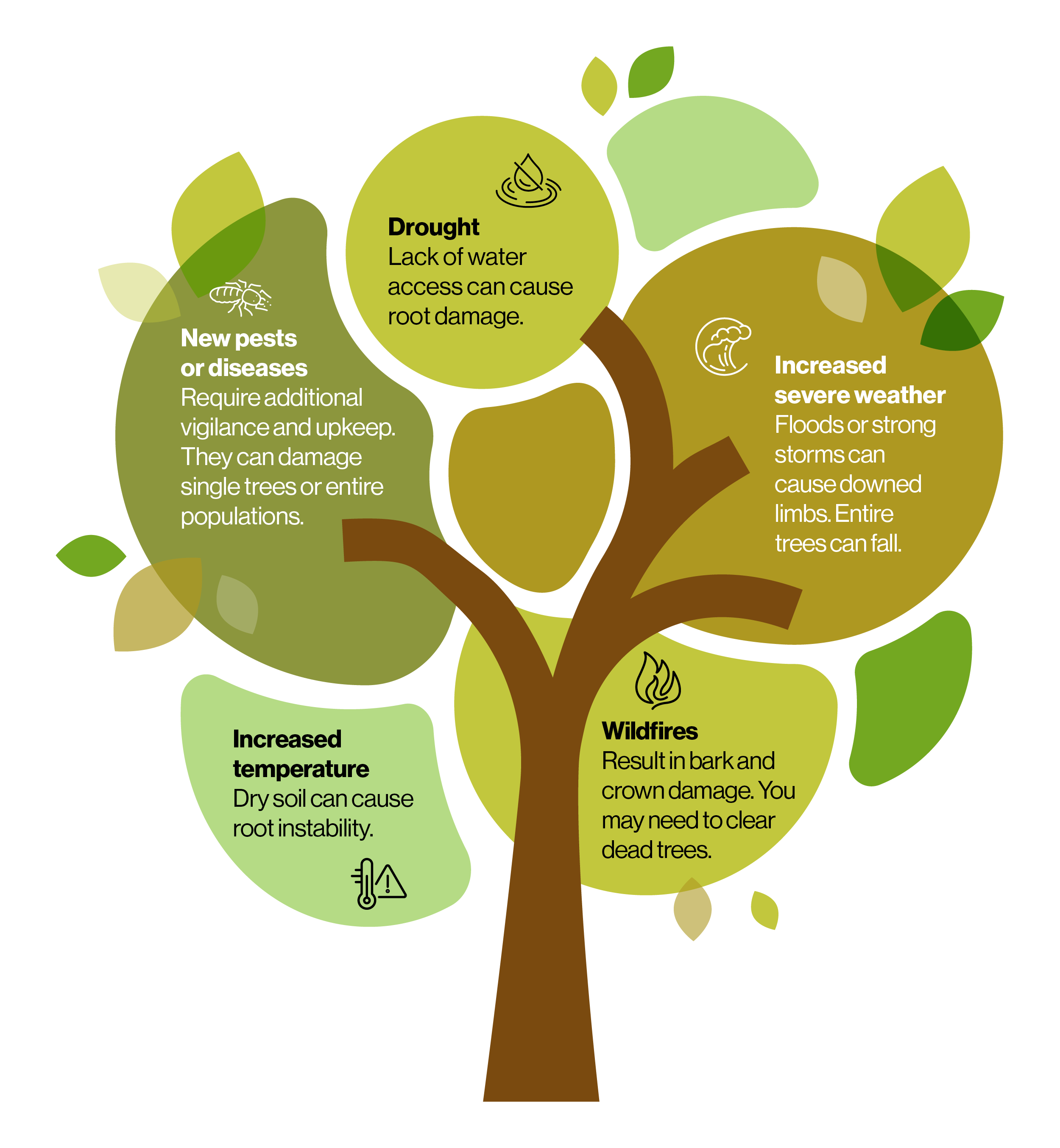Climate Change Requires Reevaluating Tree Maintenance Plans
Climate change affects your campus in many ways, including how temperature fluctuations and changes impact the health of your trees.
These changes mean you may need to adjust your established tree maintenance plan to avoid a catastrophic failure event. An unexpected tree failure (severe structural deterioration or limb/branch breakage) could lead to injury or property damage.
Understand Climate Issues Impacting Trees
Long-term changes to your local climate can come in many forms, each impacting your campus trees in different ways.

Revise Your Tree Care Plan
Combatting these changes and challenges may require an updated approach to how you maintain your campus trees. Consider these actions as you review and revise your tree care plan.
- Conduct inspections more frequently. Proper tree maintenance requires regular reviews of tree health. Changes in your climate may require you to inspect more frequently (semi-annually instead of annually, for example). Consider more post-storm inspections and additional tree health reviews if you experience drought.
- Understand disease and pest challenges. Climate change may bring new pests and diseases to your geographic area, which requires new expertise and additional mitigation measures. Previously healthy trees may become vulnerable and require more care.
- Understand your current tree species and consider new ones. As weather changes or severe events damage your current tree population, you may need to consider tree removal. For example, some trees may no longer be appropriate to keep on your campus if they might succumb quickly to damage or disease; consider removing them. Consider planting alternative species that are generally more resistant to change or may thrive in your changing environment.
- Engage professionals. Use trained professionals to evaluate the overall health of your trees — or one tree in particular — or to engage in routine maintenance. Arborists can thoroughly evaluate trees’ health; trained tree maintenance professionals can safely trim, support, or remove trees.
- Consider all targets. Catastrophic tree failure (falling or the downing of a sizeable limb) can lead to severe injury, property damage, or death. As more trees may be vulnerable to failure, it is important to widen your review of potential targets — things or places that could be impacted by future failure. Conduct a comprehensive review, including buildings, seating areas, pedestrian walkways, and roadways — even if the property isn’t yours. Remove or relocate as many targets as possible and work with neighboring property owners if necessary. Consider tree removal or pruning if you can’t mitigate the danger in any other way.
- Prepare for emergency events. In cases of tree failure, be prepared to respond quickly. If there is personal injury, call emergency health and safety services to respond. In other events, have appropriate professionals on call who can respond and remove the tree to avoid an ongoing hazard. Evaluate the surrounding area and remove or isolate damaged property. If in a populated area, hang appropriate signage and cordon the area off to avoid further injury or damage.
More From UE
Adopt Tree Assessment and Removal Policies and Practices
Additional Resources
Arbor Day Foundation: The Right Tree for the Right Place
About the Author
-

Heather Salko, Esq.
Manager of Risk Research
Heather oversees the development of risk research publications. Her areas of expertise include employment law, Title IX, and student mental health. Before joining the Risk Research team, she practiced employment and insurance coverage law and handled UE liability claims for more than a decade.